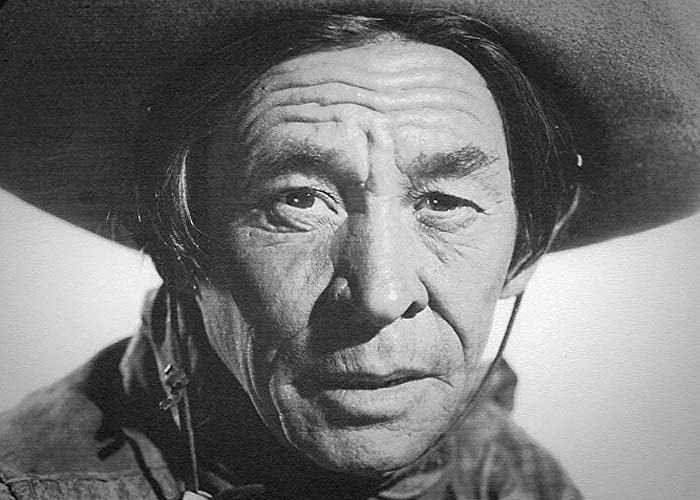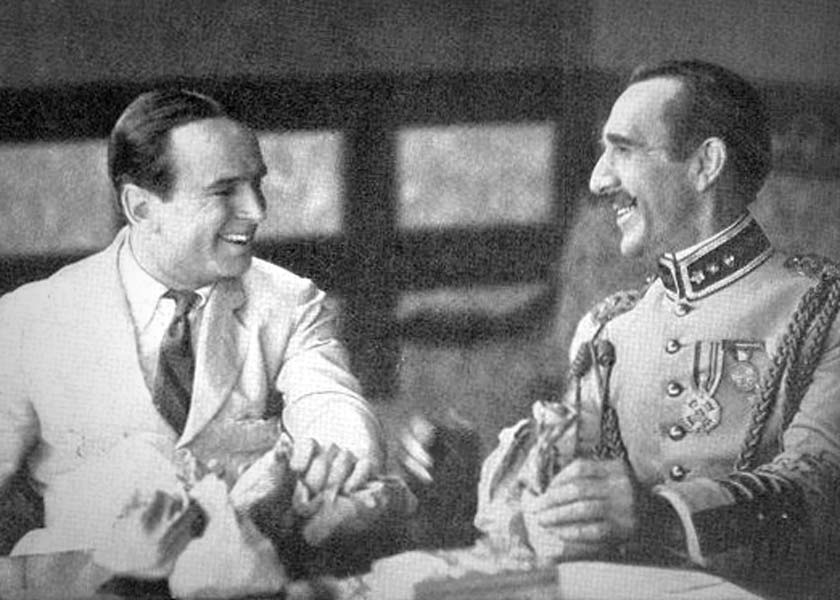Synopsis
Hernando de Valdez (Aitken) is the popular Presidente of Paragonia, a small Latin American republic. Alberto de Castilla (Du Crow), Premier of Paragonia and Valdez's principal advisor, travels to the United States in search of an engineer to supervise operations of his country's mines. Traveling with Castilla are his wife, and Valdez's pretty daughter, Juana (Rubens). In New York, Blaze Derringer (Fairbanks) declines the job until he sees Juana and, quickly changing his mind, decides to accept it. Castilla receives an urgent message from Paragonia, and he and his party take the first boat home. Blaze follows on the next boat.
Blaze arrives to find the offices of his mining company looted by the soldiers of a usurper, General Salsa Espada (Stockdale), who has overthrown the government and imprisoned Presidente Valdez. Espada intends to run the mines himself, keeping the profits, and to marry Juana to his henchman, Colonel Gargaras (Charles Stevens), the newly appointed commander of the Paragonian army.
Valdez gets a note to Castilla revealing where he is being held. Castilla, disguised, contacts Blaze. They plan to save Valdez and Juana and put an end to the reign of General Espada.
Espada, unable to operate the mines, and needing to placate the people who angry at the loss of their livelihoods, seizes Blaze and threatens to kill him if he does not cooperate. He then attempts to bribes Blaze, with money stolen from the army payrolls, to open the mines.Blaze pretends to accept the arrangement.
Blaze and Castilla release Valdez and rush to the presidential palace where the populace is calling for the Americano who will open the mines. General Espada, Colonel Gargaras and Juana are on the balcony of the palace; the marriage of Juana and Colonel Gargaras imminent. Blaze, Valdez and Castilla arrive just in time. Blaze runs ahead, assures the people that he will open the mine, and, in a short and decisive action, knocks out the General and the Colonel. Valdez proclaims the end of the revolt.
Discussion
The plot and incidents of The Americano are tailored to highlight the personality and athleticism of Douglas Fairbanks, showcasing him as the archetypal breezy, positive-thinking, athletic young American. Everything that Fairbanks does is with a grin and great verve. His expansive, captivating smile is emphasized by frequent close-ups. His athleticism, as famous as his smile, is showcased in leaping over walls, climbing up and sliding down trees, and battering his enemies.
Douglas Fairbanks was a unique film personality, larger-than-life on the screen, projecting great vitality, enthusiasm, and lightheartedness. He made his first film, The Lamb, in 1915 and quickly became a major star, highly favored by the filmgoing public.
Released in December, 1916, The Americano was the twelfth and final Fairbanks film produced by D.W. Griffith's Fine Arts Film Company and distributed by Triangle Motion Picture Company, where he had signed a long-term contract in 1915. By 1917, Fairbanks wanted to control the production of his films. He separated from Triangle-Fine Arts and founded his own studio, Douglas Fairbanks Pictures.
The typical leading lady of a Fairbanks film provides a pretty face to attract his attention. He flirts with her, and she responds gracefully and modestly. Young, demure, and appreciative of Fairbanks' fine qualities, she generally lacks a distinctive personality. In The Americano, Alma Rubens' acting is mostly confined to shyly responding to Fairbanks and looking frightened by the attentions of her unwanted fiancé, Colonel Gargaras. Rubens appeared in three other films Fairbanks made for Triangle-Fine Arts: Reggie Mixes In, The Mystery of the Leaping Fish, and The Half-Breed.

Charles Stevens, who had a fifty year career in films, appeared in most of Fairbanks' silents starting with his first, The Lamb (1915), and often had small roles as one of the villains. Colonel Gargaras is one of his more prominent parts. Short, thin and athletic, Stevens can be seen leaping on and off horses, balconies, trees, and similar objects in many Fairbanks films. He several roles in The Thief of Bagdad (1924) and The Black Pirate (1926), changing his make-up for each one. Steven's first role was in Griffith's The Birth of a Nation (1915), and his last in The Outsider (1961). He usually played Native Americans (his obituary states that he was the grandson of Apache warrior Geronimo), but also Latinos. He appeared in A and B films, and extensively on television. Often uncredited, Stevens usually had a small role and can be glimpsed in the background of many films. He has a brief — but prominent — role as the drunken Indian Charley, subdued by Wyatt Earp at the beginning of Frontier Marshall (1939) and John Ford's My Darling Clementine (1946).
John Emerson and Anita Loos met in the early 1910s. They worked with Fairbanks on several of his Triangle-Fine Arts productions in 1916 and continued with him for several films at Douglas Fairbanks Pictures. They married in 1919 and continued their partnership until Emerson's retirement in 1937.
Emerson began his career on Broadway as an actor and stage manager in 1904. By 1914, he was writing and directing for the movies. He directed and wrote three Fairbanks films at Triangle-Fine Arts and four more at Douglas Fairbanks Pictures. Emerson directed movies until 1922, and continued writing and producing until the early 1930s. He was active on Broadway during the 1920s and early 1930s, where he wrote, produced, and staged several plays with Loos, including The Whole Town's Talking and Gentlemen Prefer Blondes. He served as President of the Actors Equity Association from 1920 to 1928 during a time when the labor union was pressing for agreements on working standards for actors and managers. From 1932 to 1935, he was a writer and producer at MGM. His career ended in 1937 when mental illness forced his retirement to a sanitarium where he lived the remainder of his life.

Anita Loos began writing at an early age and during a long life produced numerous film stories, plays, and books. She entered films in 1911 when she sold a story to the Biograph Company. Her second story, The New York Hat (1912), was directed by D.W. Griffith and starred Mary Pickford and Lionel Barrymore. She was a screenwriter more or less continuously until 1942, working on nearly 140 films, many starring leading actresses such as Constance Talmadge, Marion Davies, Jeanette MacDonald, Jean Harlow, and Joan Crawford. She was also a playwright and author. Her first Broadway play, The Whole Town's Talking, was produced in 1923. She wrote novels, reminiscences about Hollywood, and an autobiography. Loos' best known work, from which she gained lasting celebrity, was the comic novel Gentlemen Prefer Blondes (1925), a spoof romance. The novel was adapted into a play, a musical comedy, and two films. Loos wrote six films for Fairbanks at Triangle-Fine Arts in 1916 and four more at Douglas Fairbanks Pictures in 1917. For Fairbanks, her specialty was the humorous intertitle, adding witty comments to the comic events on-screen. Loos is generally credited with raising the intertitle to an art form.
An unfortunate element of The Americano is the presence of a
stereotypical black man, an example of the casual racism of the time. This
character, Hartod Armitage White (even his name is a joke), aka Whitey
, is
first seen hiding from the soldiers who have wrecked the office of Blaze's
American mining company. His cowardice, servile demeanor, shuffling walk, and
speech pattern (as written in the subtitles) are all part of the stereotype. Also
typical of the time, Whitey is played by a white man (Tom Wilson) in blackface.
The impersonation is obvious, another accepted element of public portrayals of
African Americans. White audiences thought a white actor could portray a
typical negro
as effectively as an African American could; perhaps the
impersonation increased the comic
aspects of the expected stereotypical
behaviors of a black character. The racism of white Americans was upheld by the
stereotyped black characters seen on the screen until after World War II, when
films mostly dropped the stereotypes and began to portray African Americans as
real people. Through the 1920s, Tom Wilson specialized in blackface characters. In
his third film, The Birth of a Nation (1915), he plays a black
servant. The names of some of these characters, George Washington Brown or Thomas
Jefferson White, are further aspects of the racist stereotype. Wilson had dropped
blackface by 1930. His career continued, mostly in uncredited bit parts, into his
old age.
Further Reading

